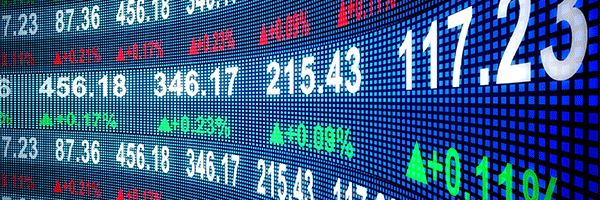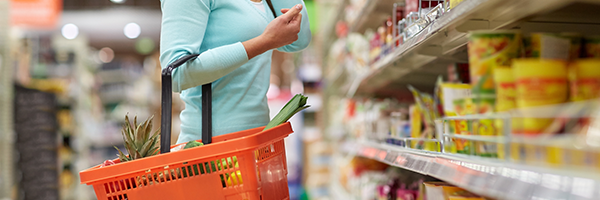 April 26, 2025
April 26, 2025
What You Need to Know Today:
Selling Salesforce on lackluster guidance and negative general stock market trend
I’m selling Salesforce (CRM) out of my Jubak’s Picks Portfolio tomorrow, March 4. The position was up 22% as of the close on March 3 from my buy on June 22, 2024.I added the stock back in June because I think companies with existing product platform that can add AI to bring value to their customers is the next stage in monetizing AI. I still think that’s true but the trend is taking a bit longer to play out than a market increasingly impatient with AI profits is willing to pay up for.If we get the sell off that certainly now looks possible, I’d be more than happy to rebuy.

Stocks fall as they begin to price in no rate cut until July
The Institute for Supply Management’s index of services advanced 2 points to 54.1 last month. That show of strength in the economy–readings above 50 indicate expansion–was enough to push stocks lower as the markets began to price in a delay in the next interest rate cut from the Federal Reserve until July The measure of prices paid for materials and services rose more than 6 points to 64.4, suggesting that the drop in the inflation rate in the service sector–about 70% of the U.S. economy–might be over.

Tariff trial ballon on how much and who will get hit?
Today the Washington Post reported that President-elect Donald Trump’s aides are exploring tariff plans that would amount to paring back–the Post’s characterization–the tariff plans that candidate Trump proposed on the campaign trail.
President-elect Trump immediately hit back on social media saying the Post story was made up and there were no such sources from his team.

Nvidia to get pop from CES and Huang keynote
Last year, Nvidia’s stock experienced a 16% increase over the 10 days following the beginning of the huge Consumer Electronics Show in Las Vegas. This year Nvidia (NVDA) CEO Jensen Huang is scheduled to deliver the opening keynote speech at 6:30 p.m. Las Vegas time. (That’s 9:30 New York time.) I’d expect a couple of volatile days for Nvidia shares following Huang’s talk.

Mexico trade move upsets U.S. apparel sector
A global trade war is like whac-a-mole: One problem pops up after another and in unexpected places. Recent mole to pop up on the trade wars front: Mexico

Saturday Night Quarterback says, For the week ahead expect…
I expect another meandering week as the market waits on Friday’s jobs report for December and the beginning of earnings season on January 15.

Special Report: 10 Great Growth Stocks that Are Getting Greater–today my 8th pick BYD
GREATER Growth Stock Pick #8: BYD (BYDDF). I know; I know. What’s a Chinese stock doing on this list? It’s here because BYD, not Tesla (TSLA) is the big growth story in electric vehicles and not just for this month–but for years. And because I can see two catalysts that are about to power this stock higher. Morningstar calculates that BYD is 20% undervalued right now. Because this is a China stock we’ll need to take a deep look at valuation later in this post. But first, the growth story.
Live Market Report (20 minute delay)

The oil slump continues with WTI crude dropping below its 50-day moving average
So suddenly oil traders are worried about slowing global growth? Remember that just last week, these same folks bid oil up to near $100 a barrel after Saudi Arabia and Russia announced that they would extend curbs on production. My take on all this: Nobody knows and the traders driving these moves don’t have much conviction in their buys or sells. Which means that any move in either direction is likely to be followed by a strong move in the opposite direction.

Count on another shutdown “emergency” and another temporary spending “fix”
Here’s the math that leads me to believe we’re headed to a new show down crisis when the temporary fix that keeps the government open until November 17 runs out.

The bond plunge (and soaring yields) isn’t limited to the United States
Yesterday, October 3, the yield on the 30-year U.S. Treasury hit 5% for the first time since 2007. The yield on the German 10-year bond hit 3% for the first time since 2011. In one financial market after another higher U.S. yields are driving global bond prices lower and bond yields higher.

Good news for inflation, interest rates, the Fed in today’s ADP jobs number if we can believe it
Private payrolls rose by just 89,000 jobs in September, according to figures published today by the ADP Research Institute. That’s the fewest jobs added in a month since the start of 2021. Private payrolls climbed 180,000 in August. The results trailed all estimates in a Bloomberg survey of economists. The report is more evidence of a further slowing in the labor market. “We are seeing a steepening decline in jobs this month,” Nela Richardson, ADP’s chief economist, said in a statement. “Additionally, we are seeing a steady decline in wages in the past 12 months.” Both trends would be good news for the Federal Reserve in its fight to lower inflation. And would be positives for a financial market which has seen bond yields rise and stock prices stagnate recently in fears that inflation might be staging a come back. Good news–if, that is, the ADP numbers can be believed.

My VIX Call Options are up 38% since September 25–hold ’em
The VIX, the CBOE S&P 500 Volatility Index, climbed another 12.32% today, October 2, to 19.78. The Call Options–with a strike at 17 and an expiration on December 20–I bought on the VIX on September 25 are up 38% as of the close on October 2. (I hold them in my Volatility Portfolio.) I’m inclined to hold them a bit longer because:

The yield on the 10-year Treasury jumped another 13 basis points today, October 3
Where did the slow-moving, deep and placid Treasury market go? The yield on the 10-year benchmark Treasury–you know the one used to set the interest rate on things like mortgages–moved up another 13 basis points today, October 3, to 4.80%. That’s a jump to 24 basis points in just two days. The Treasury market just doesn’t move like this. The yield on the 10-year Treasury is now up 63 basis points in the last month.

The yields keep rising
Despite the Wall Street consensus that there won’t be an interest rate increase at the Federal Reserve’s November 1 meeting, Treasury yields keep climbing. The yield on the 10-year Treasury closed at 4.68% today, October 2.

I’ll be selling Nvidia out of my Volatility Portfolio tomorrow
I’m going to take advantage of today’s pop in Nvidia (NVDA) to sell the shares out of my very short-term Volatility Portfolio tomorrow, Tuesday, October 2. The shares closed up at the close today at $447.82, a gain of 2.95% on the day. I initiated the position in the Volatily Portfolio on Mach 25, 2023. It was up 66% as of the close today So why sell Nvidia here?

And don’t forget Friday’s jobs report for September
The September jobs report is expected to show that the U.S. economy added 168,000 nonfarm payroll jobs in September with the unemployment rate dropping to 3.7%.

Could be a rocky day for Tesla shares tomorrow, Monday.
It could be a rough day ahead for Tesla (TSLA).The company has broken four quarterly car delivery records in a row, but then the results for the current quarter–which could be announced as early as Monday, Ocroer 2, are likely to show that deliveries have slipped. Not seriously. But when a stock is trading at 70 times tailing 12 month earnings per share in a nervous market, a stumble is all it takes to send a share price down. And this nervous market doesn’t need bad news from one of its leaders.

Saturday Night Quarterback (on a Sunday) says, For the week ahead, expect…
Kicking the shutdown 45 days down the road doesn’t change a single vote in Congress. The question remains exactly what it was before Saturday’s vote–Will McCarthy–or whoever is Speaker–use Democratic votes to pass legislation to fund the operations of the Federal government? Anything that increases the chances the Congress will return to its pre-vote chaos–or worse–will be a negative for financial markets. Anything that points to a full fiscal year budget based on a willingness to use Democratic votes in the House to pass a full fiscal year budget will be a positive for financial markets.

Consumer showing signs of stress in August
Inflation-adjusted consumer spending rose 0.1% last month. The report from the Bureau of Economic Analysis showed inflation-adjusted spending on services rose 0.2%, helped by a pickup in outlays on transportation and recreation. Spending on merchandise fell 0.2%, the first drop since March, as purchases of motor vehicles and home furnishings declined. While wages and salaries growth accelerated, real disposable income declined by 0.2% for a second month.

Low inflation in Fed’s favorite indicator says No interest rate increase at November 1 meeting
The Federal Reserve’s preferred measure of inflation, the Personal Consumption Expenditures index (PCE) rose at the slowest monthly pace inAugust since late 2020. The core personal consumption expenditures price index, which strips out food and energy prices, climbed just 0.1% month to month in August, according to the Bureau of Economic Analysis today, Friday, September 29. The so-called super core inflation index for services, which has been on the Fed’s watch list lately, also posted the smallest monthly advance since 2020. The super core rate also strips out housing costs. That rate climbed by just 0.1% in August.
Looking for signs of weakness in consumer spending? Did we just get one?
Consumer spending, which accounts for about 70% of U.S. economic activity, rose an annualized 0.8% in the April-to-June quarter, according to the third estimate of gross domestic product from the Bureau of Economic Analysis. The last estimate put the annualized growth rate at 1.7%.

Mortgage rates hit a 23-year high–is this the peak? (Probably not)
Mortgage rates surged to a 23-year high this week. The rate on the average 30-year fixed mortgage increased to 7.31% from 7.19% the week prior, according to Freddie Mac. That’s the highest rate since mid-December 2000, when it averaged 7.42%.

I just added moves 5,6, and 7 to Part 2 of my Special Report: Your 10 Best Moves for the Rest of 2023
I added three more moves to the four that I’d posted yesterday to bring the total moves in Part 2 of my Special Report up to 7.

Special Report: Your 10 Best Moves for the Rest of 2023, Part 2–10 of 10 Moves (revised on 10/22)
So what do you do with your portfolio for the rest of 2023? And what’s your best strategy to be prepared for 2024? In Part 1 of this Special Report I laid out the 10 developments that I thought would drive the financial markets for the rest of 223 and into 2024. Today, in Part 2, I’m going to give you the first 2 of 10 moves to take–with as much detail and as many specifics as possible–that you should be making now to position your portfolio for the uncertainties of the last quarter of 2023.

Notes You Need for September 25: MSFT market fuel, cost of car ownership, Goldman fine, Micky Dee franchise fees up, CSCO buys SPLK
I haven’t done one of these in a while, but I think that this current market is throwing up lots of hints that might contribute to an investing thesis but that don’t deserve a full post. So here I go with Notes You Need again.

Have you missed it? Some stocks are on the brink of a correction
The Standard & Poor’s 500 index (closing price) peaked on July 31 at 4588.96. The index is down 5.9% since then (as of the September 22 close.) That’s not correction territory (a drop of 10% ore more) but I’d say stocks can feel the hot breath of a correction on the back of their necks, The small-cap Russell 2000 Index has lost more than 11% from its July 31 closing high, roughly twice the decline in the S&P 500 Index over the same time. There are other signs of trouble in the stock market.

Buying VIX Call Options on signs that volatility is rebounding
Tomorrow, Monday, morning I’ll buy CBOE S&P Volatility Index (VIX) Call Options (so the options will go up in price if volatility does) for my Volatility Portfolio. I’m buying the December 20 Call Options with a strike price of 17 (VIX231220C00017000.)



